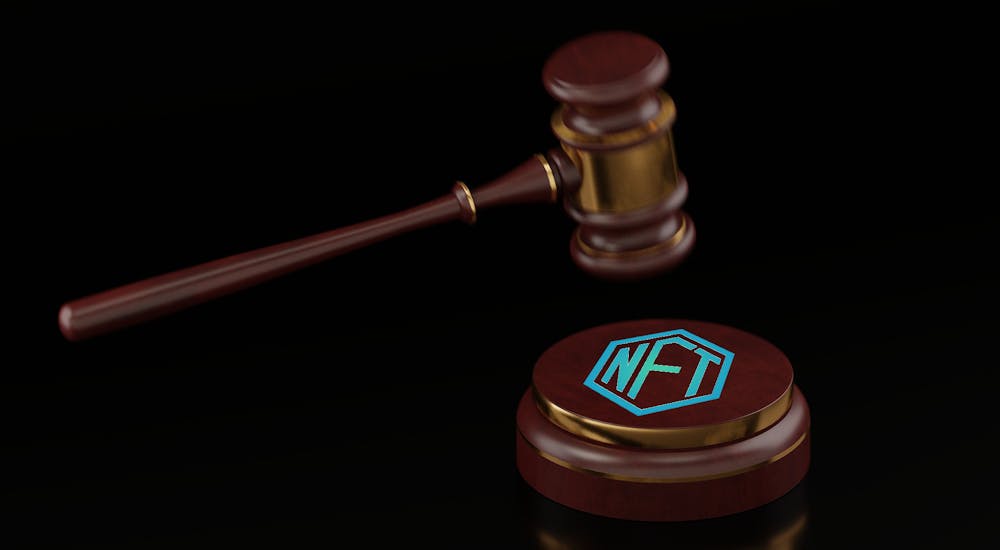If you had a few million dollars to spare, you could have been the proud owner of Jack Dorsey’s first tweet, which recently sold for $2.9 million. You could also buy art by singer and visual artist Grimes, who recently sold pieces for over $6 million. If you’re interested in owning a LeBron James highlight video, the NBA is selling them on their new marketplace at NBA Top Shot — they have recently sold over $230 million of digital collectibles.
However, don’t expect anything to arrive by mail; even at those sky-high prices, you’ll only own the digital version of these items.
Digital collectibles, which can be purchased as a non-fungible token (NFT), rely on a technology called blockchain. Blockchain helps to keep track of transactions, just as it does for cryptocurrencies like Bitcoin and Dogecoin.
“Blockchain is an open, distributed ledger that can record transactions between two parties efficiently and in a verifiable and permanent way,” according to an article written by two professors at Harvard Business School.
Each NFT will generate a unique ID, so perfect copies of the original can be quickly recognized as fake. Popular crypto collectible marketplaces include OpenSea, Nifty Gateway and Rarible.
Earlier this month, the auction house Christie’s sold “Everydays: The First 5,000 Days” by digital artist Beeple for $69 million. In a tweet, Christie’s promoted the uniqueness of the sale. But Rebecca Brown, a professor and chair of the Department of the History of Art, does not consider the sale particularly extraordinary.
“I sort of just see this as not all that revolutionary,” Brown said in an interview with The News-Letter. “Christie’s has been doing this for a very very long time but not with this label and not with this internet aspect to it. They’ve sold ephemeral art and art that does not have an objectness to it in Christie’s auctions with agreements that look similar to NFT, but they’re written out in long-form or read at the auction.”
The real change Brown sees is the ability of blockchain to serve as a distributed ledger to authenticate artwork and provide its provenance — the history of transactions and the artist’s connection to a work of art. Yet, Brown noted, even this ability is not completely novel.
“In many ways, this is also nothing new,” Brown said. “A simple signature or the paperwork that goes with an artwork is a version of a different kind of technology than NFT.”
Brown is excited about new “smart contract” proposals to provide royalties to the original artist in subsequent resales. If this new change is approved, artists can be compensated for the art they created early in their careers before they become successful, helping to resolve an issue that has been troubling contemporary artists and estates.
Crypto art and the cryptographic collectible markets have existed since at least 2017. However, over the past few weeks, the number of NFT transactions has seen an exponential boom. Samuel Chambers, a professor and chair of the Department of Political Science, believes that the COVID-19 pandemic created the socioeconomic climate for the GameStop short squeeze and NFT boom to occur.
“In early 2021, there are way too many people with way too much money that they do not know what to do with,” Chambers said in an interview with The News-Letter. “Many rich people who were working from home over Zoom in America and Europe were getting the same income levels as they had before, but they couldn’t spend it. They began asking where they can put their money to get the best return on it.”
While the stock market crashed in March 2020 — partly due to investors' concerns about the pandemic’s impact — the market has largely recuperated the losses; the S&P 500 index closed 16% higher at the end of last year than the beginning.
In response to COVID-19, the U.S. government slashed interest rates and provided individuals with stimulus checks. Instead of investing in stocks, which are already at all-time high, or bonds, which were made less attractive due to low interest rates, financially wealthy individuals became willing to invest in unorthodox assets. Enticed by the ease of purchasing cryptocurrencies and the opportunity of owning eccentric digital assets, investors turned to NFTs.
Yet NFT and cryptocurrency transactions, in general, are environmentally destructive. In a livestreamed session on Clubhouse, Bill Gates warned of the large amounts of electricity that are used in a single Bitcoin transaction.
Artists have to pay cryptocurrency miners up to a few hundred dollars to mint the initial token corresponding to their artwork before they can auction it. Additionally, tracking sales and bids on blockchain for a single-edition NFT has a massive energy footprint. Understandably, the environmental impact of NFTs seems far removed when individuals make transactions online.
The allure of cryptocurrency will likely continue to encourage people to buy NBA highlight clips or Jack Dorsey tweets. There may also be another more covert phenomenon that has engendered NFT’s rise: the fear of missing out.





